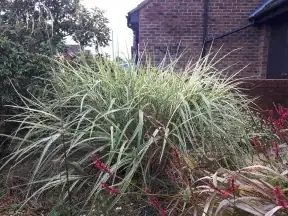I planted two miscanthuses in spring 2019, but I didn't have time to cut them back in March this spring (three or so inches above ground, as almost universally recommended).
In April, I gathered, it was too late, it already started growing, so I left them as is.
However, they grew without problems and reached over 6 ft this year (as opposed to 5 ft last year). Old stuff just fell off naturally. What is than the deal with cutting them back in early spring/late winter? Is it really needed?
